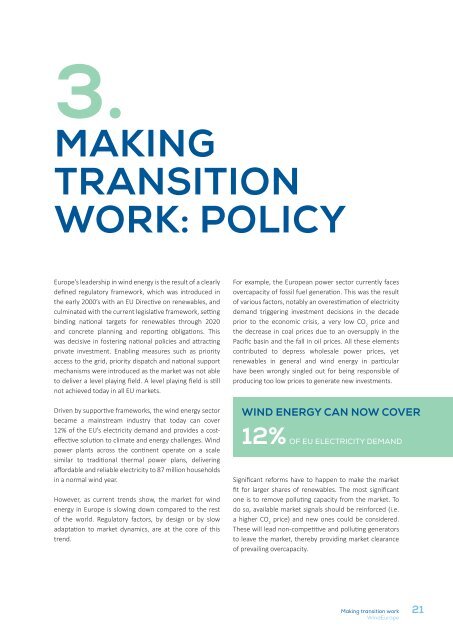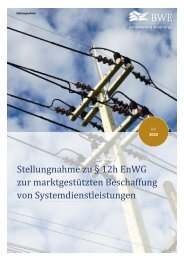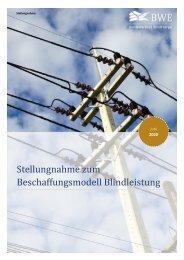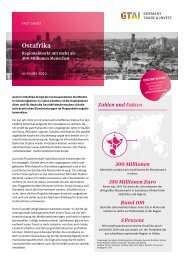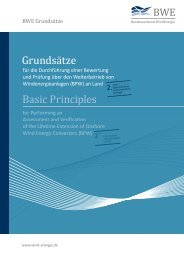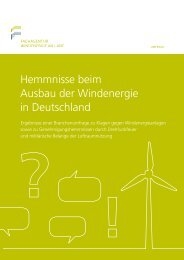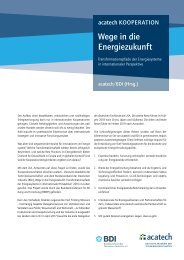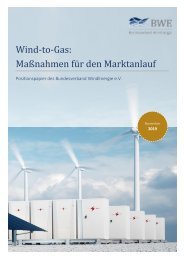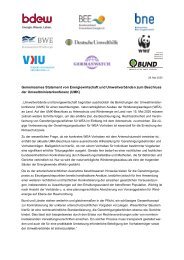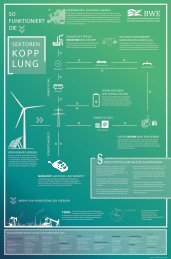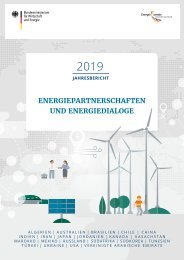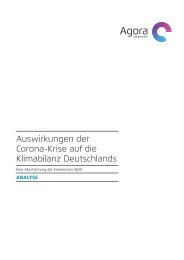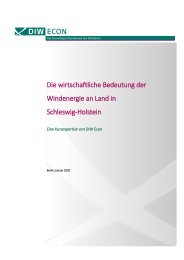Making transition work - Wind Europe
This report provides clear elements on how to make transition work in the coming decade. It provides recommendations to policymakers on how to facilitate a swift transformation of the energy system and considers the policies that will make Europe the best choice for those investing in renewables.
This report provides clear elements on how to make transition work in the coming decade. It provides recommendations to policymakers on how to facilitate a swift transformation of the energy system and considers the policies that will make Europe the best choice for those investing in renewables.
Create successful ePaper yourself
Turn your PDF publications into a flip-book with our unique Google optimized e-Paper software.
3.<br />
MAKING<br />
TRANSITION<br />
WORK: POLICY<br />
<strong>Europe</strong>’s leadership in wind energy is the result of a clearly<br />
defined regulatory frame<strong>work</strong>, which was introduced in<br />
the early 2000’s with an EU Directive on renewables, and<br />
culminated with the current legislative frame<strong>work</strong>, setting<br />
binding national targets for renewables through 2020<br />
and concrete planning and reporting obligations. This<br />
was decisive in fostering national policies and attracting<br />
private investment. Enabling measures such as priority<br />
access to the grid, priority dispatch and national support<br />
mechanisms were introduced as the market was not able<br />
to deliver a level playing field. A level playing field is still<br />
not achieved today in all EU markets.<br />
Driven by supportive frame<strong>work</strong>s, the wind energy sector<br />
became a mainstream industry that today can cover<br />
12% of the EU’s electricity demand and provides a costeffective<br />
solution to climate and energy challenges. <strong>Wind</strong><br />
power plants across the continent operate on a scale<br />
similar to traditional thermal power plans, delivering<br />
affordable and reliable electricity to 87 million households<br />
in a normal wind year.<br />
However, as current trends show, the market for wind<br />
energy in <strong>Europe</strong> is slowing down compared to the rest<br />
of the world. Regulatory factors, by design or by slow<br />
adaptation to market dynamics, are at the core of this<br />
trend.<br />
For example, the <strong>Europe</strong>an power sector currently faces<br />
overcapacity of fossil fuel generation. This was the result<br />
of various factors, notably an overestimation of electricity<br />
demand triggering investment decisions in the decade<br />
prior to the economic crisis, a very low CO 2<br />
price and<br />
the decrease in coal prices due to an oversupply in the<br />
Pacific basin and the fall in oil prices. All these elements<br />
contributed to depress wholesale power prices, yet<br />
renewables in general and wind energy in particular<br />
have been wrongly singled out for being responsible of<br />
producing too low prices to generate new investments.<br />
WIND ENERGY CAN NOW COVER<br />
12% OF EU ELECTRICITY DEMAND<br />
Significant reforms have to happen to make the market<br />
fit for larger shares of renewables. The most significant<br />
one is to remove polluting capacity from the market. To<br />
do so, available market signals should be reinforced (i.e.<br />
a higher CO 2<br />
price) and new ones could be considered.<br />
These will lead non-competitive and polluting generators<br />
to leave the market, thereby providing market clearance<br />
of prevailing overcapacity.<br />
<strong>Making</strong> <strong>transition</strong> <strong>work</strong><br />
<strong>Wind</strong><strong>Europe</strong><br />
21


